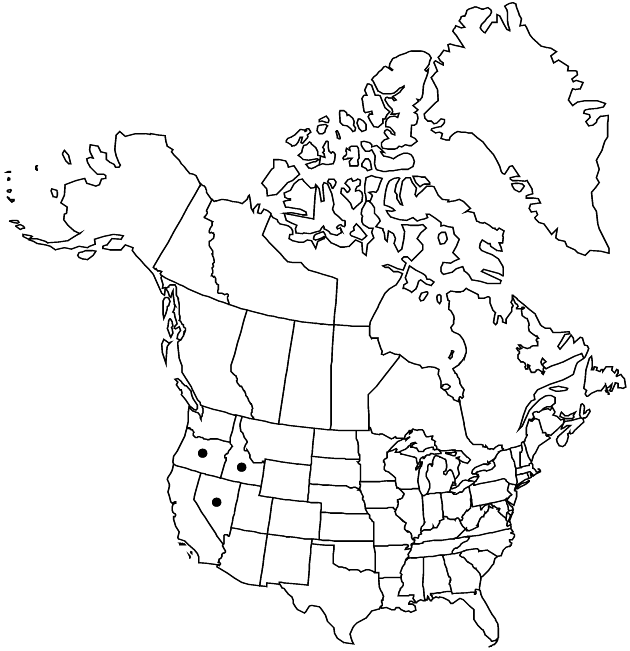Difference between revisions of "Pyrrocoma linearis"
Phytologia 71: 60. 1991.
FNA>Volume Importer |
FNA>Volume Importer |
(No difference)
| |
Revision as of 18:45, 24 September 2019
Plants 5–20 cm. Stems 1–4, ascending, reddish, slender, lightly tomentose, glabrescent, eglandular. Leaves: basal sessile to winged-petiolate, blades linear (grasslike), 40–120 × 2–5 mm, margins usually entire, rarely with a few small teeth; cauline sessile, blades linear, 10–20 × 1–3 mm; faces sericeous to sparsely shaggy-tomentose, eglandular. Heads usually borne singly, terminal. Peduncles 4–8 cm. Involucres hemispheric, 7–10 × 13–18 mm (bases white-tomentose). Phyllaries in 2 series, loosely appressed, linear to linear-lanceolate, 8–9 mm, equal, bases chartaceous, margins entire, ciliate, apices green, acute, faces sparsely villous. Ray florets 25–50; corollas 6–10 mm. Disc florets 30–60; corollas 5–7 mm. Cypselae subcylindric, 2–4 mm, faces sericeous; pappi tawny, 3–4 mm.
Phenology: Flowering Jun–Jul.
Habitat: Marshy grassy areas, vernal stream banks, swales, meadows
Elevation: 1600–2500 m
Distribution

Idaho, Nev., Oreg.
Discussion
Pyrrocoma linearis is easily distinguished by its linear, entire, grasslike leaves, and terminal, single heads. This species is similar to P. uniflora and was formerly included there as a subspecies. Pyrrocoma uniflora differs in having lanceolate or oblanceolate leaves with dentate margins.
Selected References
None.